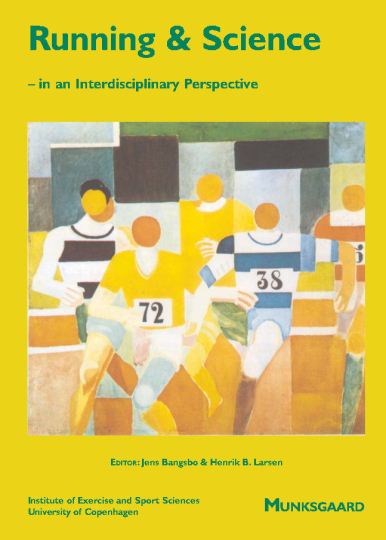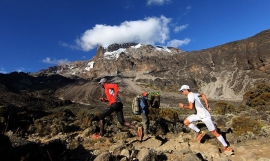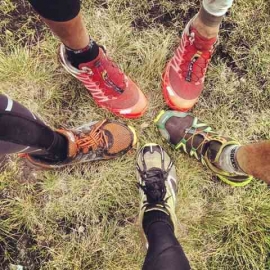Running and science: an interdisciplinary perspective 电子书下载地址:
Running and science: an interdisciplinary perspective_Jens Bangsbo;Henrik B. Larsen_2001.pdf
//www.nduoke.com/shujixiazai/8716123499-running-and-science-download
Running and science: an interdisciplinary perspective 简介:
This book gathers a number of disciplines relevant to science of running. Several chapters focus on the various aspects of performance in running, whereas others deal with how to train to improve performance in running with specific descriptions of the training performed by top-class runners. The aspect of how to avoid injuries is also thoroughly covered.
All chapters provide up-to-date knowledge about running presented by world leading experts within running. The book is a useful tool for researches, teachers, coaches and runners to understand how to optimise performance in running.
Running and science: an interdisciplinary perspective 目录:
Preface ........................................................................................................7
Preword ......................................................................................................9
List of editors and authors...................................................................... 11
About the editors ..................................................................................... 13
About the authors .................................................................................... 15
Physiological capacity of the elite runner ............................................ 19
Tim Noakes
Muscle fibre type characteristics of the runner.................................. 49
Jesper L. Andersen
Physiological factors affecting running performance ........................ 67
Carlo Capelli & Pietro E. di Prampero
Running economy ................................................................................. 85
Jan Svedenhag
Prevention of overuse injuries in running ........................................ 109
Albert Gollhofer
Training principles in distance running ............................................ 123
Henrik B. Larsen
Training volume and intensity............................................................ 149
Leif Inge Tjelta and Eystein Enoksen
Running and science: an interdisciplinary perspective 评论:
This is the spiritual successor to the excellent volume on the marathon published by the Annals of the New York Academy of Sciences (volume 301) in 1977. It is a series of articles based on presentations at the Second European Congress of Sport and Exercise Science held in Copenhagen in 1997. There were 800 delegates and some 400 papers presented by 100 different speakers. The book is one of a series, and other volumes have appeared on soccer and sailing.
There are seven chapters, including topics such as exercise physiology, running economy, prevention of overuse injuries, and principles of training. The book opens with an excellent chapter by Tim Noakes summarising the physiological capacity of the elite runner. In his inimitable, almost conversational style, Tim leads the reader through the basics of exercise physiology as it relates to elite level running performance. He concludes that multiple physiological systems are likely to contribute to superior running ability. As an African, he provides a useful analogy from that continent explaining the physiological strategy that the cheetah has evolved to survive as a successful predator. Its small size and likely high running economy slows its rate of heat accumulation just sufficiently for it to outrun the smaller gazelles on which it preys (there is some useful information you can pass on to your children for their next biology project!). There is the hint of Tim's more recent work at the end of the chapter where he states that “central (brain) fatigue may contribute to the fatigue experienced during prolonged exercise”. Regular readers of this journal will be familiar with the significant recent publications by Tim and his co‐researchers in this area.
Later chapters of the book discuss the muscle fibre characteristics of the runner, with needle biopsy studies contributing much useful information in this area. The fibre type composition may change during a yearly training cycle, depending on the type of training undertaken. The next two chapters discuss the contribution of physiological factors such as maximal aerobic power and running economy to overall running performance. The ability to store and use elastic energy in the running musculature and tendons may be especially important. The following chapter is a brief dissertation on the prevention of running injuries, with emphasis on the man‐shoe‐surface interaction. The final two chapters discuss training principles, firstly from a theoretical standpoint quoting relevant research, and secondly from a case study perspective. This I found most useful. The case studies showed that, for different athletes, a trade‐off between high training volume and high training intensity had a very individual effect. It supported what many of us believe empirically—that there are several ways to skin a cat.
The chapters are generally well written and extensively referenced. There is appropriate use of tables and diagrams, and these are clearly explained. However, the conference was held in 1997, so there is no information on more recent developments.
The book will be of most use to exercise or health professionals who are working with runners, and to athletics coaches with a good scientific background. For students of exercise physiology, I would recommend Wilmore and Costill's book instead. For those who want a comprehensive up to date book on running, I would recommend Tim Noakes' Lore of running.
Overall, I think this book enhances the already significant contribution of the Nordic countries to sports science and medicine.
更多跑步书籍见://www.nduoke.com/running-books
跑步书籍下载见://www.nduoke.com/shujixiazai
跑步书籍百科见://www.nduoke.com/shujibaike
跑步书籍下载地址合集://www.nduoke.com/shujixiazai/download
跑步书籍汇集大全附下载://www.nduoke.com/running-books/daquan




